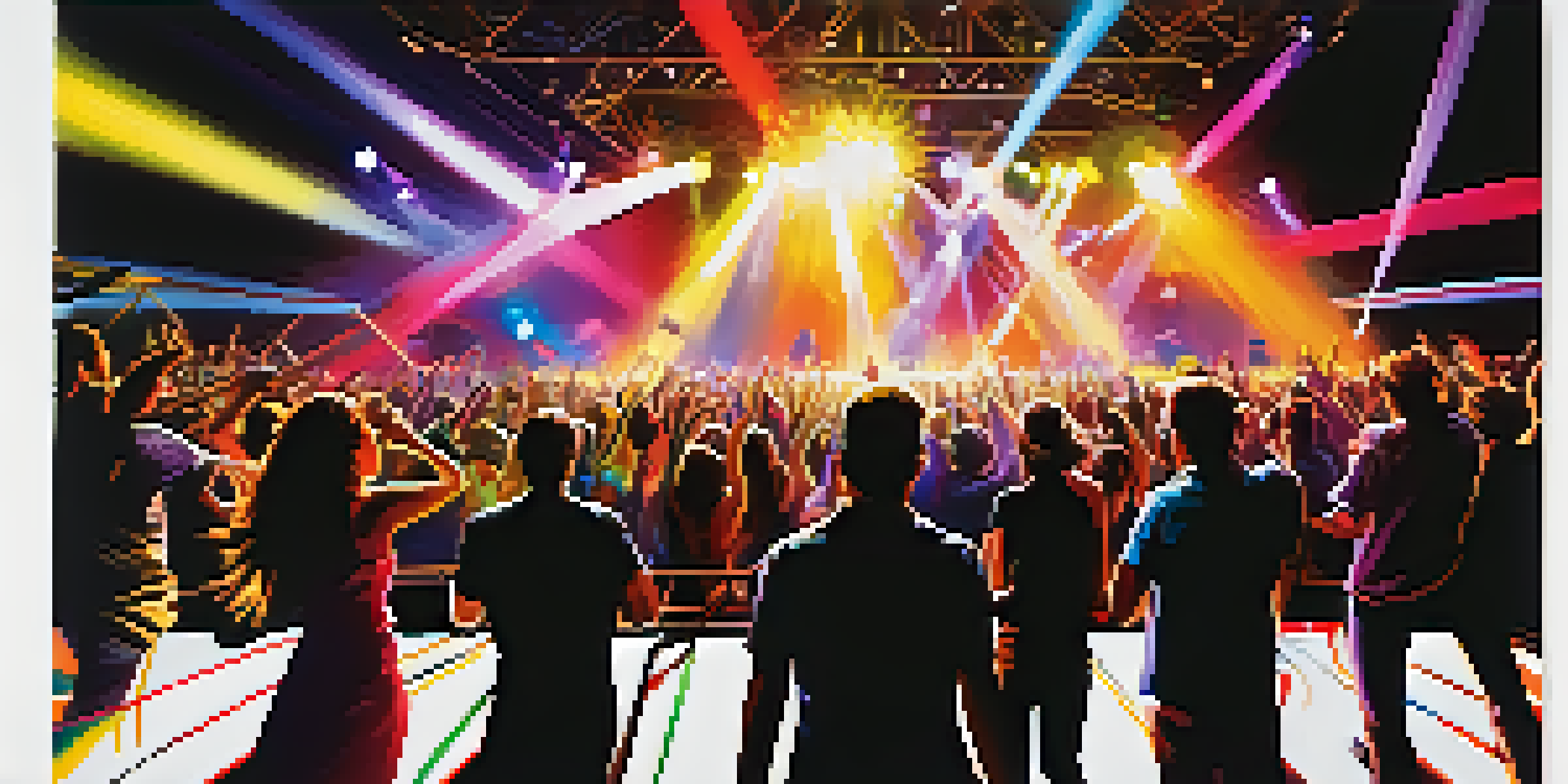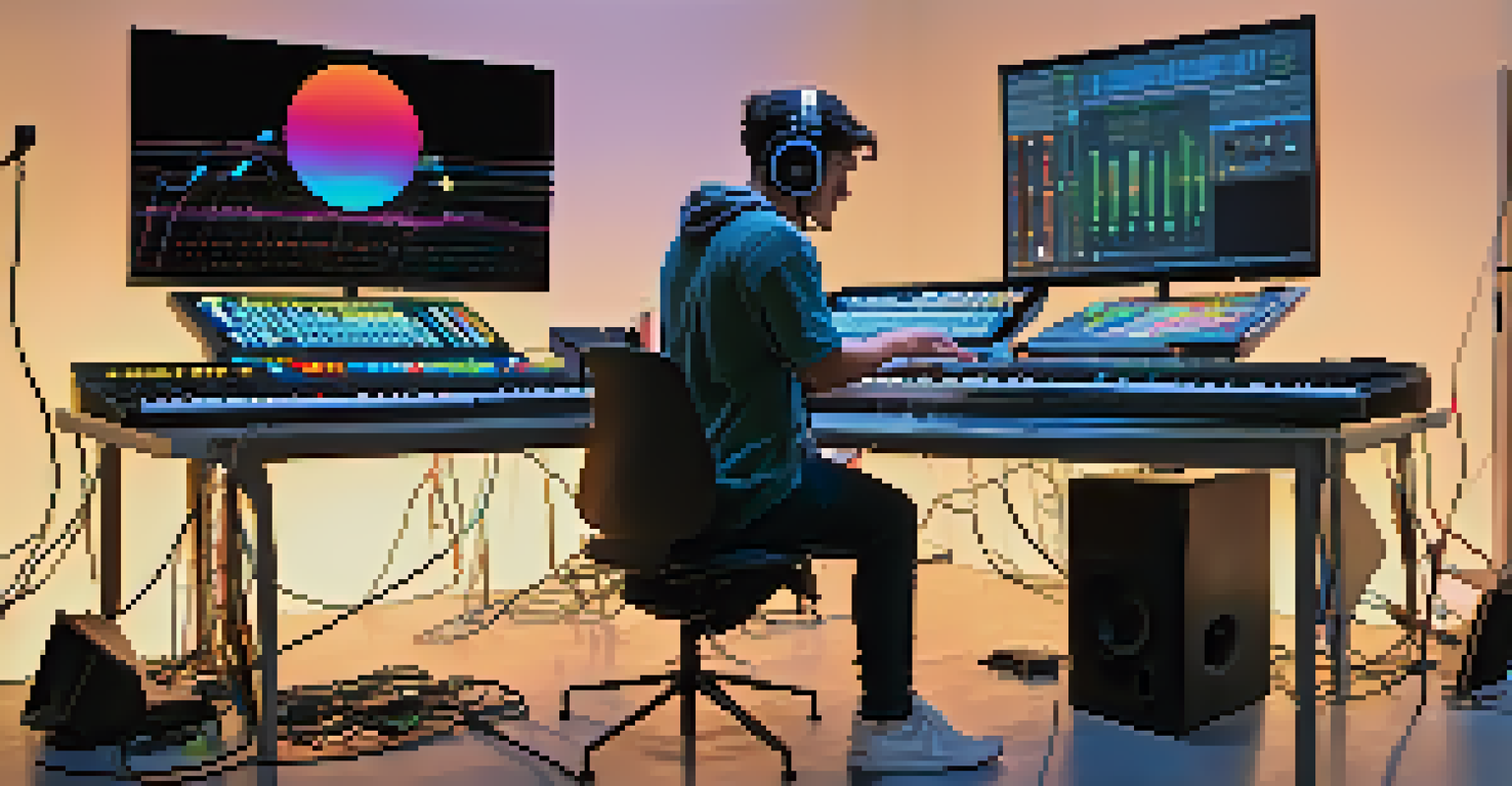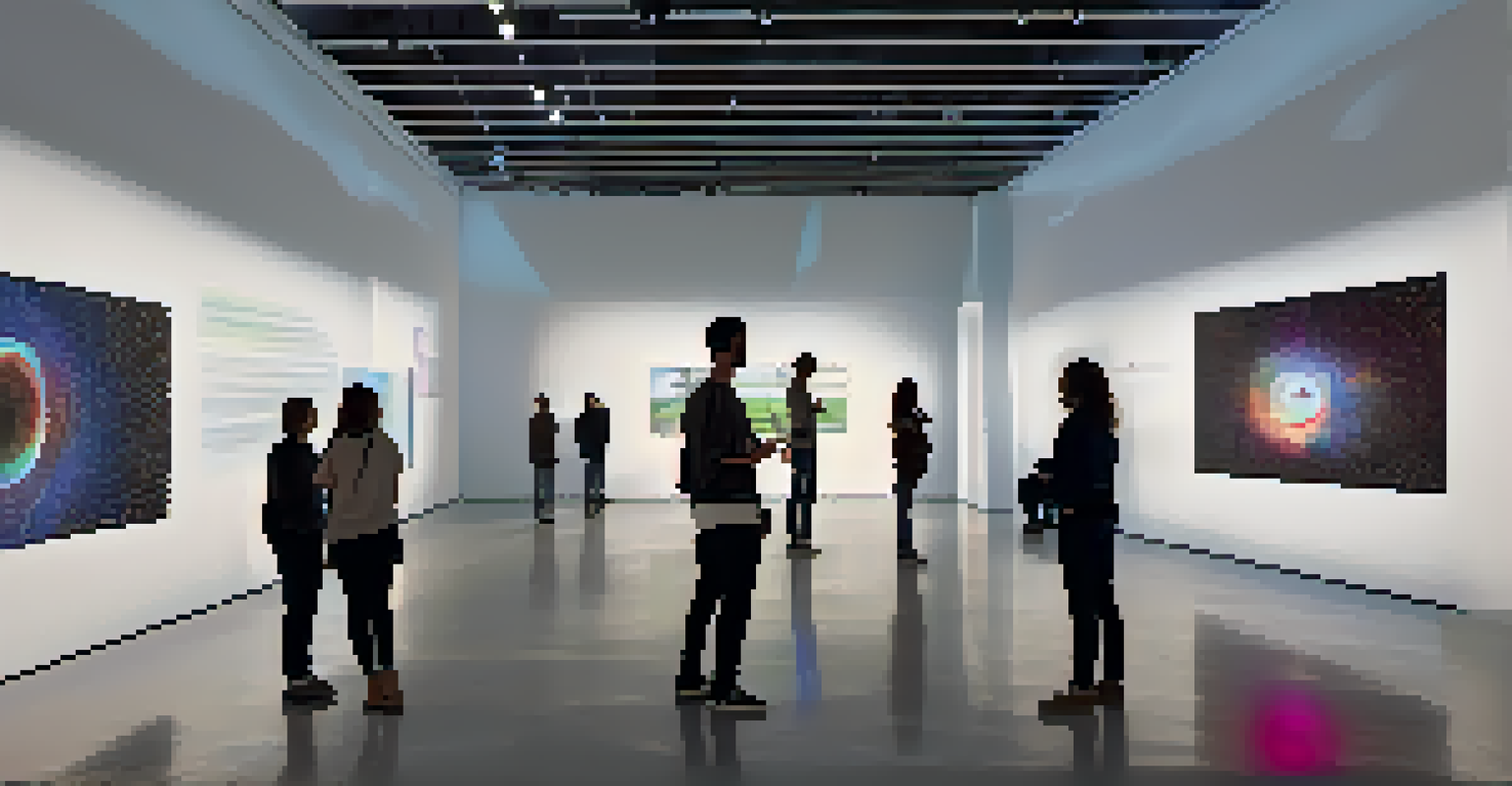Blending Music and Code: Creating Audio-Visual Experiences

The Intersection of Music and Technology in Art
In today's digital age, the lines between music and technology are blurring. Artists are exploring innovative ways to combine sound and visuals, creating immersive experiences that captivate audiences. This fusion allows for a unique storytelling approach, engaging viewers on multiple sensory levels.
Music and technology are not separate entities; they are two sides of the same coin, each enriching the other.
For example, think about a concert where the lights pulse to the rhythm of the music, enhancing the emotional impact of each song. This synergy not only draws in the audience but also creates a memorable experience that lingers long after the show is over. It's a vivid reminder of how technology can elevate artistic expression.
As we dive deeper into this blend of music and coding, we uncover new techniques that artists can use to push boundaries and explore their creativity. From interactive installations to audiovisual performances, the possibilities are endless.
Understanding the Basics of Audio Programming
Before diving into creating audio-visual experiences, it's essential to grasp the basics of audio programming. This involves using coding languages like Python or JavaScript to manipulate sound. Understanding how to work with audio files, synthesizers, and MIDI (Musical Instrument Digital Interface) is crucial for any aspiring audio programmer.

For instance, using a library like p5.js allows you to create sound directly in the browser, making it accessible for beginners. You can start by generating simple tones and gradually progress to creating complex soundscapes. This hands-on approach demystifies the process and encourages experimentation.
Music and Tech Create Immersive Art
The fusion of music and technology enables artists to craft engaging and multi-sensory experiences that enhance storytelling.
Learning audio programming opens up a world of possibilities, enabling you to create everything from music apps to interactive art installations. It's a skill that can transform your creative vision into reality, making the journey all the more rewarding.
Tools for Creating Audio-Visual Experiences
There are numerous tools available for artists looking to blend music and code. Software like Max/MSP and Ableton Live allows for intricate control over sound and visuals, providing a playground for experimentation. These platforms offer a user-friendly interface, making it easier to connect musical elements with visual outputs.
The future belongs to those who believe in the beauty of their dreams, especially in the realm of art where technology meets creativity.
Another popular tool is Processing, which is perfect for creating visual art with code and can also incorporate sound. With its vast community and resources, you can find countless tutorials and examples to guide you along the way. This support can be invaluable for beginners navigating the world of audio-visual art.
By familiarizing yourself with these tools, you'll be well-equipped to start your journey in creating compelling audio-visual experiences. Each tool has its strengths, so exploring a few can help you find the best fit for your artistic style.
Incorporating Interactivity in Audio-Visual Projects
One of the most exciting aspects of blending music and code is the ability to create interactive experiences. By using sensors, such as motion detectors or touch screens, you can allow your audience to engage with your installation in real-time. This interaction can transform how viewers perceive and experience the art.
Imagine an installation where the sound changes based on the audience's movement. As they walk closer, the music intensifies, creating an immersive environment that reacts to their presence. This dynamic relationship between the artwork and the viewer can evoke powerful emotions and foster a deeper connection.
Interactive Elements Enhance Engagement
Incorporating interactivity, such as motion sensors, transforms audience participation and deepens their connection with the artwork.
Incorporating interactivity not only enhances the viewer's experience but also challenges you as an artist to think outside the box. It encourages innovation and creativity, pushing you to explore new ways of engaging your audience.
Case Studies: Successful Audio-Visual Projects
To grasp the potential of blending music and code, let's examine some successful case studies in this field. One notable example is the work of artist Ryoji Ikeda, who utilizes data as a medium to create stunning audio-visual installations. His projects often involve abstract visuals paired with intricate soundscapes, inviting viewers to immerse themselves in the experience.
Another inspiring project is 'Rain Room' by Random International, where visitors can walk through a room of falling water without getting wet. The installation uses sensors to detect movement, creating a unique audio-visual interaction that captivates audiences. These projects demonstrate the powerful impact of combining technology with artistic expression.
Analyzing these successful projects can provide valuable insights into what makes an audio-visual experience resonate with viewers. They serve as inspiration for artists looking to explore this innovative blend of music and code.
Challenges in Blending Music and Code
While the fusion of music and coding is exciting, it also comes with its fair share of challenges. One common hurdle is the steep learning curve associated with programming languages and software tools. Many artists may feel intimidated, fearing that their lack of technical knowledge will hinder their creative vision.
Additionally, achieving synchronization between audio and visual elements can be tricky. It requires precise timing and attention to detail to ensure that the sound complements the visuals seamlessly. Without this harmony, the overall experience can feel disjointed and less impactful.
Emerging Tech Shapes Future Creations
As virtual and augmented reality technologies advance, they open up new possibilities for innovative and immersive audio-visual experiences.
Despite these challenges, persistence and practice can lead to significant growth. Embracing the learning process is essential, as it ultimately enhances your ability to create captivating audio-visual experiences.
The Future of Audio-Visual Experiences
Looking ahead, the future of audio-visual experiences seems bright and filled with potential. As technology continues to evolve, we can expect even more innovative tools and platforms to emerge. These advancements will likely make it easier for artists to create immersive environments that push the boundaries of creativity.
Moreover, the rise of virtual and augmented reality is opening new avenues for audio-visual experiences. Imagine stepping into a virtual world where music not only surrounds you but also interacts with your movements, creating a fully immersive experience. The possibilities are truly limitless.

As artists embrace these emerging technologies, we can anticipate a vibrant landscape of audio-visual art that challenges perceptions and inspires future generations. The blend of music and code will undoubtedly play a crucial role in shaping the future of creative expression.